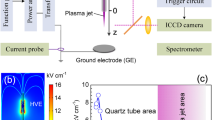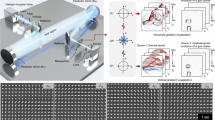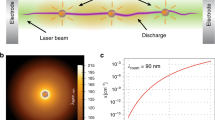Abstract
THE important differences in the behaviour of slow and fast counters noticed by Trost1 and others2,3 have led several workers to investigate, in a preliminary manner, the factors which prevent the discharge, developed near the path of the incident primary particle, from spreading along a counter, or from one counter to another enclosed within the same envelope. The experiments of Stever4, Wilkening and Kanne5, Ramsey6 and Curran and Strothers7, and others are well known. Hill and Dunworth8 have recently reported results on the velocity of discharge spread.
This is a preview of subscription content, access via your institution
Access options
Subscribe to this journal
Receive 51 print issues and online access
$199.00 per year
only $3.90 per issue
Buy this article
- Purchase on SpringerLink
- Instant access to full article PDF
Prices may be subject to local taxes which are calculated during checkout
Similar content being viewed by others
References
Trost, A., Z. Phys., 105, 399 (1937).
Korff, S. A., and Present, R. D., Phys. Rev., 65, 274 (1944).
May, A. N., Rep. Prog. Phys., 5, 390 (1938).
Stever, H. G., Phys. Rev., 61, 38 (1942).
Wilkening, M. H., and Kanne, W. R., Phys. Rev., 62, 534 (1942).
Ramsey, W. E., Phys. Rev., 61, 96 (1942).
Curran, S. C., and Strothers, J. E., Proc. Camb. Phil. Soc., 35, 654 (1939).
Hill, J. M., and Dunworth, J. V., Nature, 158, 833 (1946).
Korff, S. A., "Electron and Nuclear Counters" (Van Nostrand, New York, 1946).
Author information
Authors and Affiliations
Rights and permissions
About this article
Cite this article
CRAGGS, J., JAFFE, A. Spread of Discharge in Geiger Counters. Nature 159, 369–370 (1947). https://doi.org/10.1038/159369a0
Issue date:
DOI: https://doi.org/10.1038/159369a0



